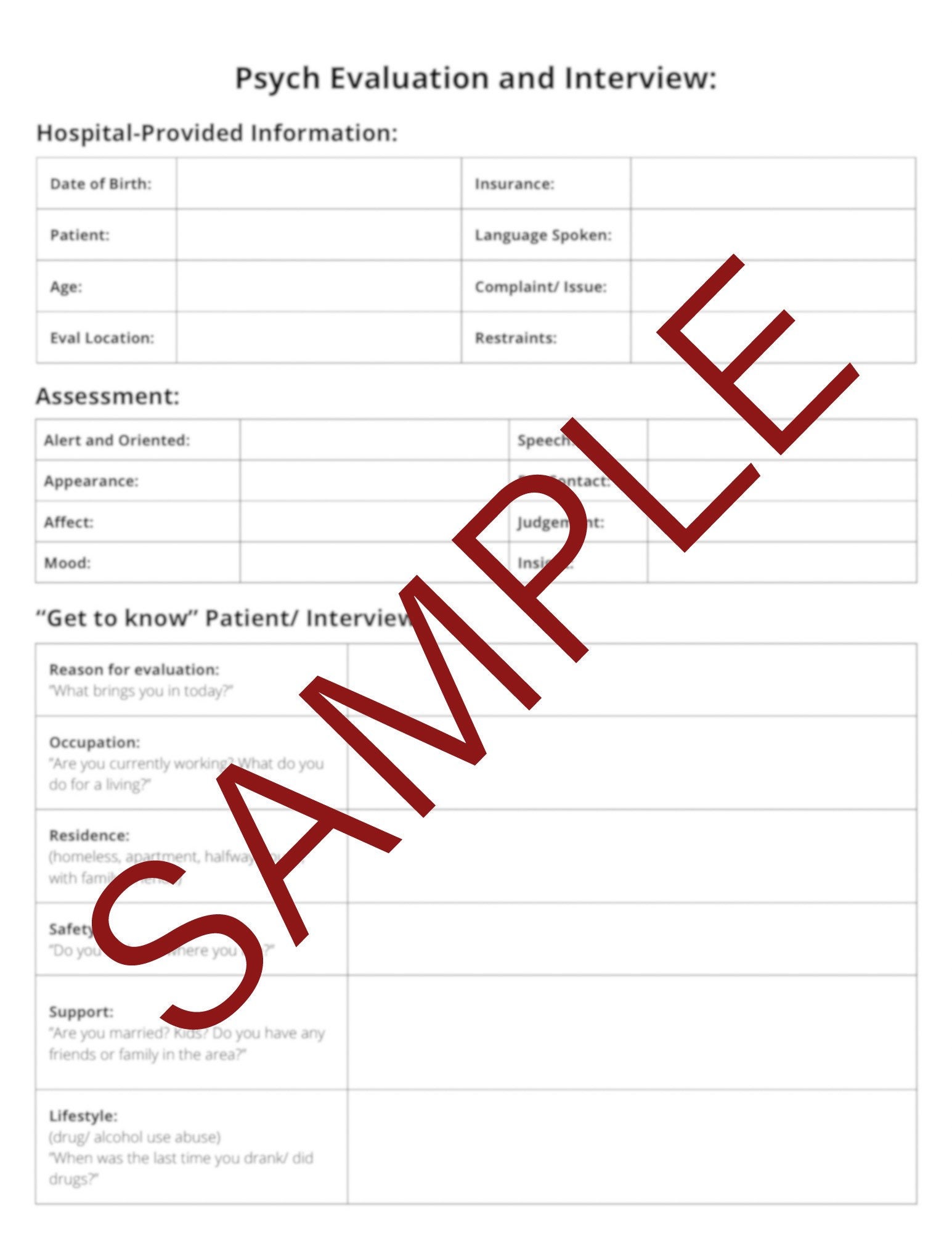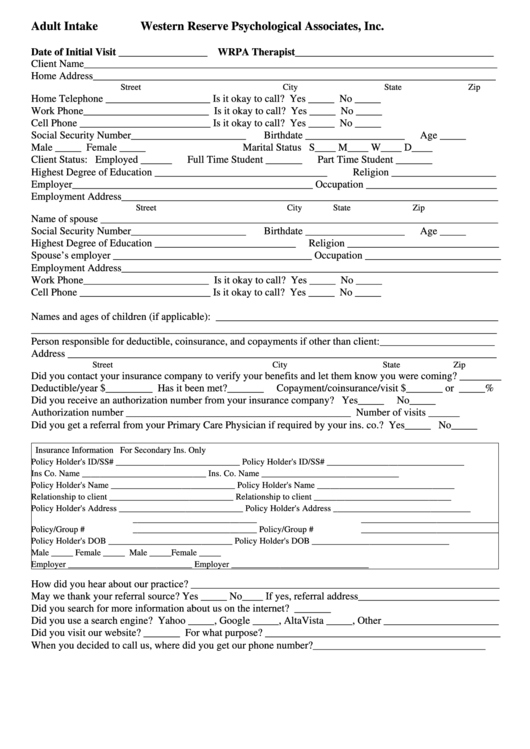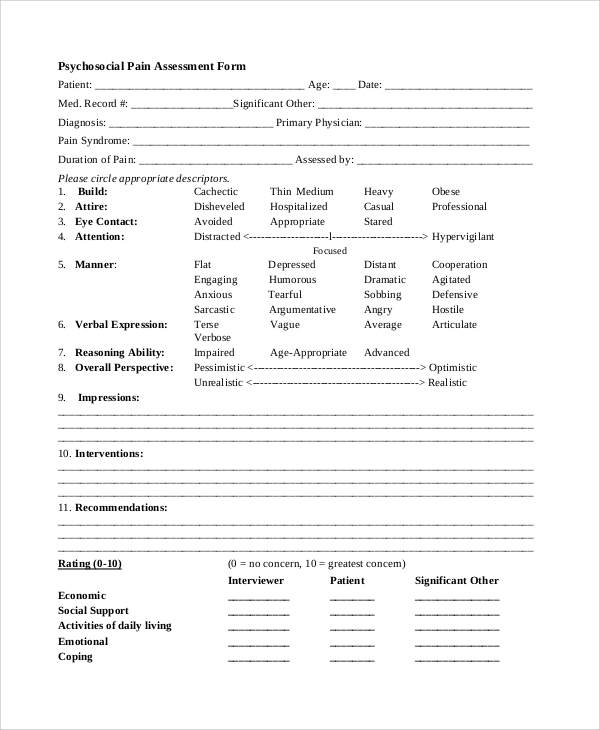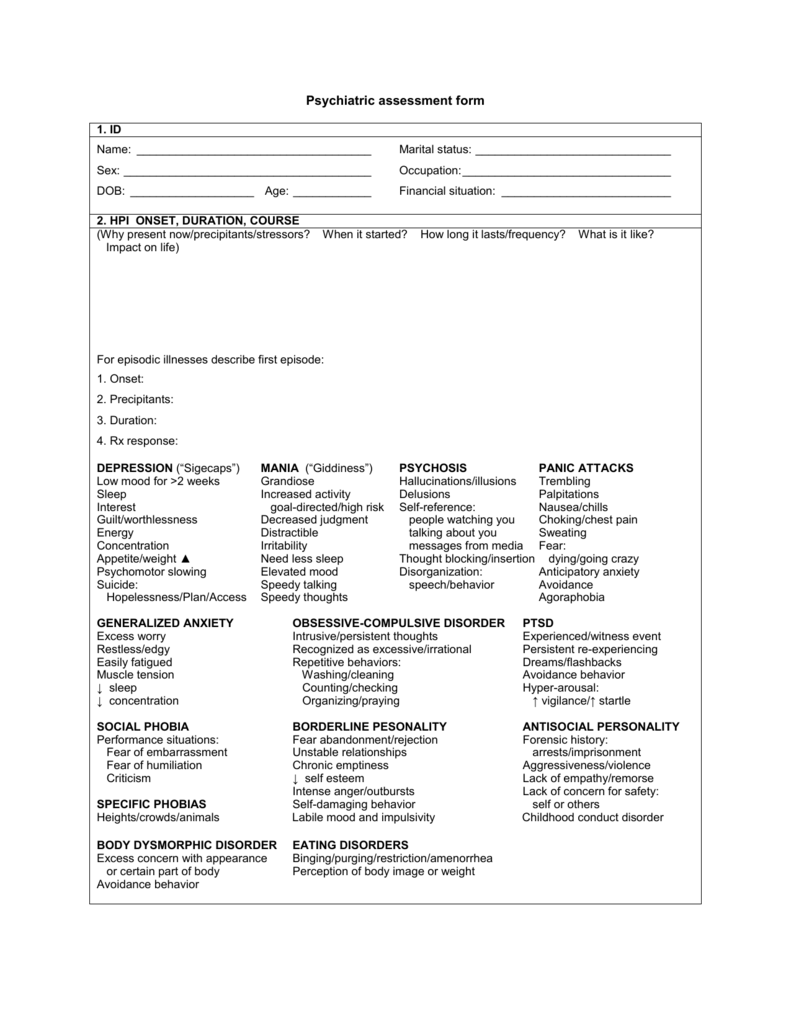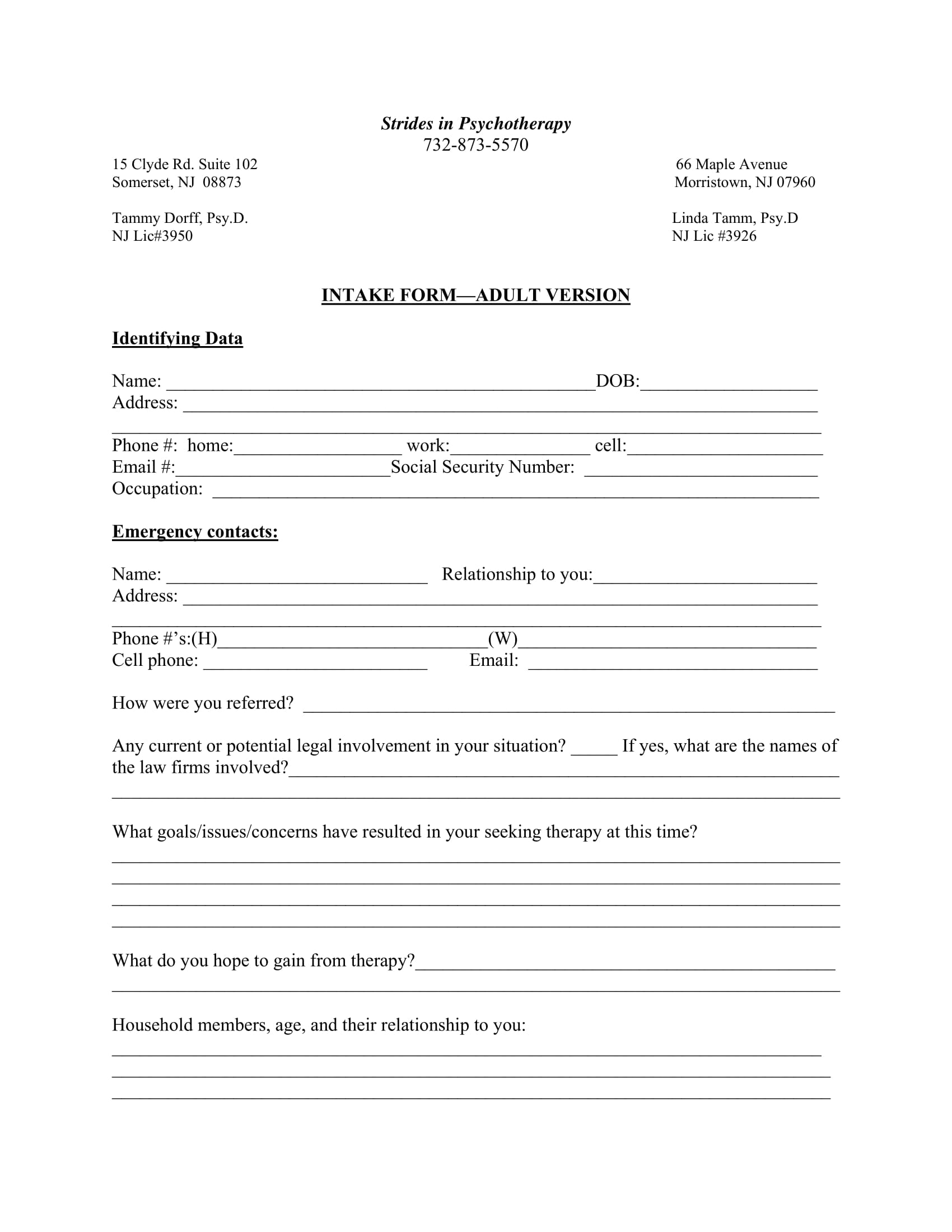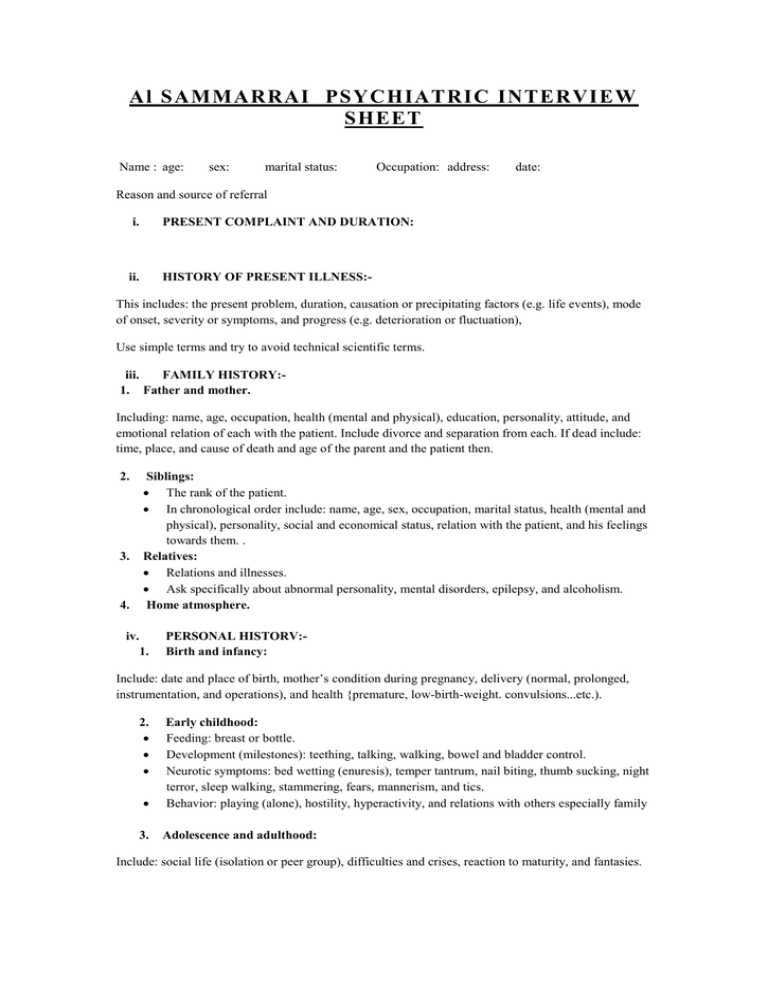Sigecaps mnemonic (open table in a new window) the. These goals are achieved by: Excess concern with appearance or certain part of body avoidance behavior. Web the interview should first explore what prompted the need (or desire) for psychiatric assessment (eg, unwanted or unpleasant thoughts, undesirable behavior), including how much the presenting symptoms affect the patient or interfere with the patient's social, occupational, and interpersonal functioning. The approach begins with a mnemonic encompassing the major psychiatric.
A fundamental part of this interview is to establish and foster a healthy relationship and secure attachment between the interviewer and the patient. Web this chapter describes the psychiatric history and mental status examination (mse), in the conduct of an effective psychiatric interview. The steps of the interview process are described along with the techniques the clinician must master in order to elicit information relevant to a diagnostic formulation in an orderly, reliable, and. Child and adolescent psychiatry interview. Remember, everyone has a different way of interviewing, but every question you ask should have a purpose.
Web the psychiatric interview involves a balance of being empathetic, asking the right questions, and thinking about the diagnostic criteria carefully for psychiatric disorders. Web realizing the complexity of psychiatric interviewing and the need to accurately and systematically assess the signs and symptoms of the major psychiatric disorders, the authors developed a tool utilizing a typical outline of the psychiatric interview yet covering the diagnostic criteria required to make a differential and preferred diagnosis. Web an example template for recording information that also serves as an interview template is demonstrated in table 1, below. The approach begins with a mnemonic encompassing the major psychiatric. To make an initial differential diagnosis and to formulate a treatment plan.
Web the interview should first explore what prompted the need (or desire) for psychiatric assessment (eg, unwanted or unpleasant thoughts, undesirable behavior), including how much the presenting symptoms affect the patient or interfere with the patient's social, occupational, and interpersonal functioning. The steps of the interview process are described along with the techniques the clinician must master in order to elicit information relevant to a diagnostic formulation in an orderly, reliable, and. Web for each domain—appearance, speech, mood, affect, thought, perception, intelligence, cognition, rapport, and insight—a chapter is devoted to description of the many more common as well as less common signs and symptoms that are germane to psychiatric assessment. Excess concern with appearance or certain part of body avoidance behavior. These psychiatry interview templates helped me streamline my patient interviews. Web this chapter provides a practical guide to the psychiatric interview, emphasizing its structure and the multifaceted nature of the technical resources being used. Web a thorough standardized psychiatric interview is critical for determining dc and identifying underlying conditions influencing dc, although some elements of the interview (e.g., family illness history, developmental history) are less important than in other interviews. Sigecaps mnemonic (open table in a new window) the. Web the purpose of a psychiatric interview is to establish. Web the psychiatric review of symptoms is a useful screening tool for identifying patients who have psychiatric disorders. Web to help you manage that tension, here are two templates. Remember, everyone has a different way of interviewing, but every question you ask should have a purpose. What are the primary aims of the first psychiatric interview? Web learn how to safely perform a psychiatric interview that is thorough and comprehensive. Web this chapter describes the psychiatric history and mental status examination (mse), in the conduct of an effective psychiatric interview.
Child And Adolescent Psychiatry Interview.
What are the primary aims of the first psychiatric interview? Web realizing the complexity of psychiatric interviewing and the need to accurately and systematically assess the signs and symptoms of the major psychiatric disorders, the authors developed a tool utilizing a typical outline of the psychiatric interview yet covering the diagnostic criteria required to make a differential and preferred diagnosis. Web this chapter provides a practical guide to the psychiatric interview, emphasizing its structure and the multifaceted nature of the technical resources being used. It also provides some useful links for additional information.
Web An Example Template For Recording Information That Also Serves As An Interview Template Is Demonstrated In Table 1, Below.
Web this chapter describes the psychiatric history and mental status examination (mse), in the conduct of an effective psychiatric interview. Web the interview should first explore what prompted the need (or desire) for psychiatric assessment (eg, unwanted or unpleasant thoughts, undesirable behavior), including how much the presenting symptoms affect the patient or interfere with the patient's social, occupational, and interpersonal functioning. The focus is on the common psychiatric presentations you should be familiar with and will encounter during your placement in psychiatry. Web to help you manage that tension, here are two templates.
Web For Each Domain—Appearance, Speech, Mood, Affect, Thought, Perception, Intelligence, Cognition, Rapport, And Insight—A Chapter Is Devoted To Description Of The Many More Common As Well As Less Common Signs And Symptoms That Are Germane To Psychiatric Assessment.
Web a general psychiatric evaluation has as its central component an interview with the patient. Therapeutic relationship with the patient to collect, organize and formulate a differential diagnosis and treatment plan. Excess concern with appearance or certain part of body avoidance behavior. The approach begins with a mnemonic encompassing the major psychiatric.
Web A Thorough Standardized Psychiatric Interview Is Critical For Determining Dc And Identifying Underlying Conditions Influencing Dc, Although Some Elements Of The Interview (E.g., Family Illness History, Developmental History) Are Less Important Than In Other Interviews.
Web the psychiatric interview involves a balance of being empathetic, asking the right questions, and thinking about the diagnostic criteria carefully for psychiatric disorders. These psychiatry interview templates helped me streamline my patient interviews. Web the psychiatric review of symptoms is a useful screening tool for identifying patients who have psychiatric disorders. These goals are achieved by:

